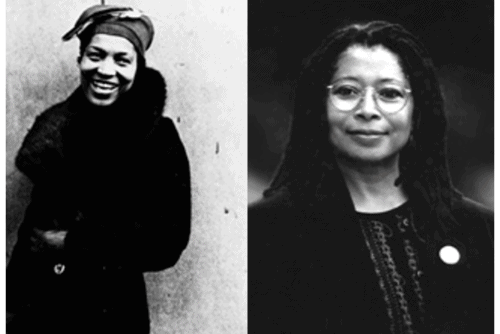Probably the most significant break between articulations of neoliberalism lies between the older (Marxist) tradition of “political economy” and the Foucauldian threads that have delineated the characteristics of “neoliberal governmentality.” These literatures and their related political projects, based on fundamentally different ideas about the nature of political power, barely speak to each other. For those of us trying to understand the more intimate experience of US poverty management, though, neither iteration of the “neoliberal” is particularly helpful on its own.
If we draw on David Harvey’s analysis to represent political economy, neoliberalism represents the world-historical era when the transnational capitalist elite gradually succeeded in their long-term project to regain global political hegemony. A political alliance between captains of capital, politicians, and their professional ideologues seized both national and transnational political power. Steadily, all over the world, political leaders started to sing the theme songs of free-market fundamentalism, rolling back the working-class gains of the twentieth century, and imposing a race to the bottom in search of the most willing workers and the cheapest wages in the world. Through the mechanism of debt, the IMF and other transnational governance structures became the mechanisms of disciplining dissident nations as well as classes, extending the doctrine to the farthest corners of the world. Insufficiently well-disciplined racial minorities, former union strongholds, whole regions, and whole countries, became locked out of the “space of flows”; undesirable as workers and negligible as consumers, a surplus population to be spatially segregated, and perhaps slowly disciplined by destitution into supplication for rock-bottom wage labor.
There is nothing wrong with these claims, but the picture—as is usual with narratives of structural violence—leaves you asking what people are making of the situation. How is it actually lived? More seriously, there seems to be an assumption—mirroring the “homo economicus” of the market fundamentalists—that neither “capital” nor “government” needs to incorporate the perceived interests of the working- and lower-middle classes. As the limited mechanisms of (authentic) class negotiation under Keynesian managed capitalism are whittled away, the market itself has become the primary disciplinary tool, if usefully supplemented by corporate ideologists blasting empty spectacle and false truths through DSL and the airwaves.
With its core interest in productive rather than repressive power, the Foucauldian tradition gives a much richer account of “neoliberal” subjectivities. Where the political economists emphasize the breaking of the twentieth-century class compacts and the steady abandonment of the majority to precariousness, the “governmentality” field tends to concentrate on the successful interpellation of at least the broad middle classes of the more industrialized countries into the new order. The old disciplinary institutions of the state, they argue, have given way to marketized governmentalities with more indirect, but highly cost-effective forms of normalizing the population. Through biopolitical risk management and the dissemination of expertise on wellness, self-esteem, and self-actualization, these marketized governmentalities optimize the productive capacity of the population, many of whom thus become enthusiastic and cheap “good subjects,” frenetically active in their own governance. The great risks collectivized by the welfare states—unemployment, poverty, sickness, and death—shift to the domain of individual responsibility and self-care, rewarded and punished with conditional cash benefits and deductions.
Yet this theoretical model, with its focus on the devolution of governance to self-management, tends to slip from an abstract logic or way of seeing to a description of the historical era, leaving no breathing room for phenomena counter to its logic. As such, it has some serious limitations as a primary lens into poverty governmentality, especially in violently unequal countries like the United States, Brazil, and South Africa.
Connections across sites and locations
In the United States, rather than “shrinking” “big” government over the poor and working classes, successive administrations have shifted both the balance of payments and the symbolic center of gravity from education to incarceration. Public education contracts and stripped-down social services are farmed out to the cheapest bidder, while billions flow annually into an immense Hobbesian machinery of military, policing, surveillance, and detention powers. Although the criminal justice system is taking on more (Foucauldian) neoliberal forms of cost-benefit risk assessment, it is also enormously invested in old-fashioned disciplinary institutions, and, indeed, in managing a substantial proportion of the male population through extremely direct and forceful external control.
Foucault’s lifelong exploration of multiform governmentalities, beginning with the Ancient Greeks, might encourage us to think more flexibly about variation in our own time. There is still much of Foucault’s “sovereignty” in the way the United States does power, whether at war or at home: death penalty spectacles and many other spectacular uses of force, and overt public shaming of criminals, rehab clients, or welfare recipients on work detail. The criminal justice system has directly taken over the provision of myriad functions of the social state from social services to mental health. In the other direction, the specter of criminal prosecution reaches further and further into the mundane messes of school or domestic disputes, small-scale drug possession, child truancy, or non-compliance with psychiatric medication.
With the logic and processes of criminal justice reinfusing the institutions of education, health, welfare, and family governance, prosecution or incarceration “backup” is evoked to control the behavior of women as well as men. In the process, the gendering of poverty has been shifting. The US women’s incarceration rate has now surpassed that of men in most other advanced industrialized countries, and women with children are no longer considered deserving of subsidized housing, and are placed instead in family shelters full of explicit disciplinary mechanisms for eliciting housing-readiness, parenting skills, and anger management.
What does all this mean for the process of subjectification among those living in poverty?
Popular culture tends to highlight the violent rebel masculinities within the world of the US poor, with men as thugs and gangsters, and women as victims. But the reality is that government in the “neoliberal” United States has not so much abolished the project of intimately reeducating the poor as it has transformed it, forcing existing social service organizations to discipline their clients’ behavior, instilling personal responsibility through myriad forms of microaccountability, and, in many cases, partnering with churches to harness the enthusiasm of the Third Great Awakening for a vast moral renewal. Rather than being replaced by loose networks of self-improvement and care, prisons and jails are also accompanied by shelters, court-mandated job training, “carceral” schools, and court-mandated drug-rehabilitation institutions.
This intersection of the neoliberal and the neoconservative is characterized by a dramatized external control very different from the more subtle forms of subjectification and responsibilization examined in most of the governmentality literature. The same is true on the level of discourse. Yes, this is “responsibilization,” but within militantly “traditionalist” templates of personal responsibility. I would argue that this campaign has been extraordinarily successful: the neoconservatives have persuaded millions of poor people that their sins and failures are their own, and that individual striving is the only way forward. These ideas are, of course, endemic to the American scene. Yet the extraordinary neutralization of the civil rights movement and other movements for equity, I would argue, owes much to the neoconservatives’ incorporation of the trope of addiction.
Addiction as poverty management
With the rise of drug courts, court-mandated or “strong-arm” rehabs are growing rapidly, and addiction treatment has become a primary site for the reeducation and reform of poor people. Whether explicitly based on the 12-step program, or on the more medicalized language of CBT (cognitive behavioral therapy), or on evangelical conversion, these places have in common an intensive process designed to transform basic behavioral dispositions and instill a new moral compass.
“Strong-arm” addiction treatment represents a highly successful hybridization of medicalization and moral judgement. Court-mandated facilities have become a fuzzy edge of the criminal-justice system, some of them physically inside prisons, and more of them outside prisons, but closely coordinated with the courts. As the vast expenses of the war on drugs have raised the desirability of treatment, the police and the courts have become the primary adjudicators of the diagnosis of drug and alcohol addiction, at least among poor and working-class people. All DWI offenders, as well as large numbers of other low-level offenders, are offered very strong incentives to define themselves as addicts, and criminal justice backup continues to structure their progress and to punish or reward relapse or cure. (A similar process applies in many homeless shelters, where longer-term stays are made contingent on self-identification with either mental illness or addiction.)
Once inside rehab, the client’s diagnosis is reaffirmed, as staff apply NIDA’s notion that addiction is a physical disease, biochemically “hardwired” in the brain. Offering sympathy and redemption for those willing to work on their recovery, staff members explain that the cure lies in changing behaviors. Men need to grow up, to be “habilitated” into right-thinking, adult men—good workers and providers. Women are more likely to be understood as victims of men, but have an equal responsibility to become independent and responsible.
While the biochemical diagnosis continues to anchor the color- and class-blind neutrality of the “disease” trope, the representation of addiction slides swiftly into therapeutic, moral, and, ultimately, cultural frames of reference. Not only are immaturity, selfishness, aggression, and self-indulgence seen as inherent to the addict persona, but his or her cultural style and tastes (unless firmly middle class) are brought into the “habilitation” process. Referencing the role of poverty or racism in one’s life is dismissed as “blaming,” another manifestation of the immature, addict ego.
Conversion-based treatment
The last decade has seen important expansion into faith-based drug treatment, yet another product of the momentous overhaul of American social policy initiated by the 1996 Personal Responsibility and Work Opportunity Reconciliation Act. PRWORA dismantled the longstanding secularizing “firewalls,” and encourages proselytizing religious organizations to bid for government contracts. Both conversion-based social service programs and exclusionary hiring practices are now protected under the principle of religious freedom.1
Conversion-based treatment takes the latent morality of therapeutic discourse and supercharges it, transmuting the concepts into biblical terms. The goal is “freedom,” but rather than foregrounding the battle against drugs in particular, conversion-based treatment programs exhort and train students toward a holistic liberation from their sinful selves—achieved through total submission to a stern but loving god. Women’s “slutty” clothing is thrown away, and men are trained to suppress lust and to orient themselves toward fatherhood. Together, the program’s discipline, chapel spectacles, and heavy-duty curriculum of bible memorization affirm a stark world of embattled believers besieged by active evil. As in other strong-arm rehabs, the Manichaean vision of this program is concretized with dramatic criminal-justice consequences for those who fail to walk the line. And as in all these “total” institutions, clients are taught to appreciate—even love—authoritarian “structure,” and to seek disciplining institutions to guide their subsequent lives.
The people who become “recovered in Christ” ideally follow a path leading beyond the program to social integration, with spiritual and material support from local “biblical Christian” congregations. Again, poor communities of origin, and often “the city” itself, are shunned, considered the source of the problem. For those with fewer resources of their own, and for African Americans, the shift to a self-sustaining suburban existence is tricky, and, like other rehab graduates, they may sit in limbo for years in “sober housing” following graduation.
The proliferation of sober housing itself demonstrates the centrality of the addiction trope for US poverty in the neoliberal era. Together with homeless shelters, sober housing has become the primary form of subsidized housing for able-bodied adult men. (The situation is not much better for women.) In other words, the only way to look like a “deserving” case is to position oneself clearly on the lone road to sobriety and prosperity. Articulating destitution as the product of addiction becomes a precondition for a chance to climb out of the hole.
All in all, I feel that those of us working on social justice within the United States need to wake up to the energetic remaking that is going on in poverty-management institutions. Activism by and with poor people needs to directly address the effects of neoconservativism’s “sovereign” governmentalities, with their loving fetishization of structure, and the brilliant reinvention of old poverty tropes of dependency and impulsivity within a new biologicalization of poverty.
- Most conversion-based rehabs—including very large players—appear to be unlicensed. Rather than conforming to the methods sanctioned by state licensing, they can draw generic state benefits, such as food stamps or state funding for individuals with substance abuse problems to live in sober “group residential housing,” as well as broadly-targeted social service block grants. Licensing is becoming less crucial as politicians supporting conversion-based treatment and other services bypass the still-problematic constitutional question of “secular” services within “pervasively sectarian” organizations by instituting voucher systems for individual choice. [↩]





